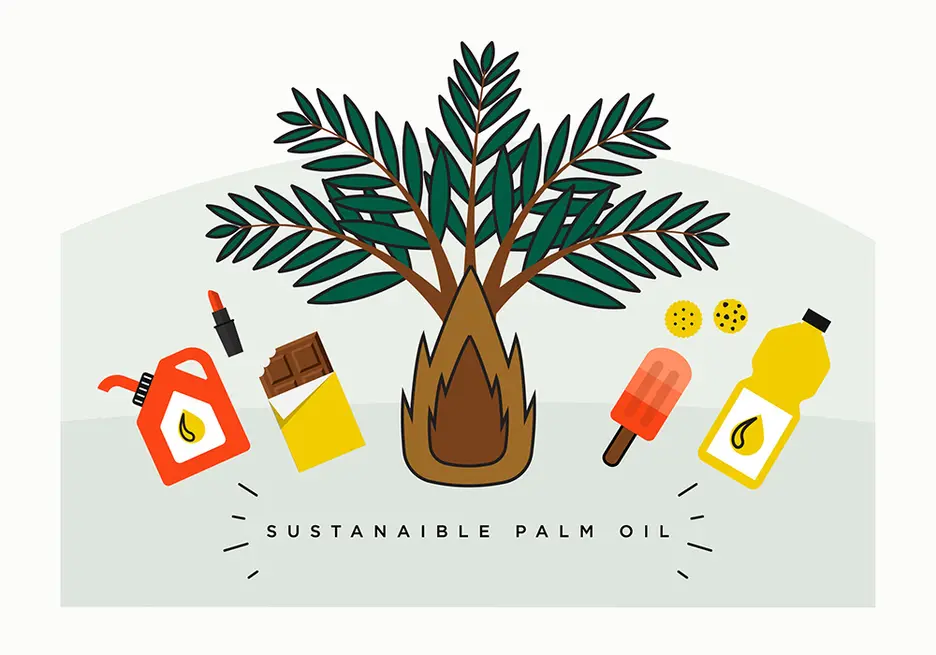Supporting sustainable palm oil in Latin America and the Caribbean

Palm oil in the world
African palm is one of the most widespread crops in the world, with annual growth in areas under cultivation averaging more than 5% over the last five years. Approximately 67 million tons of palm oil were produced in 2017, according to the United States Department of Agriculture, and Indonesia, Malaysia and Thailand were the main producers with 88.5% of the total.
Four Latin American countries (Colombia, Guatemala, Ecuador and Honduras) are among the eight largest producers in the world, but together they produce only 4.8% of total global production. However, Latin America not only has the greatest potential for expanding cultivation, it also faces the great challenge of improving production per hectare under cultivation. In the region there are countries like Guatemala, which has the highest yield in the world (5.41 tons of crude oil per hectare [t/ha] on average), and others like Ecuador, where productivity (average of 2.08 t/ha) is the lowest in the region and one of the lowest in the world.
Latin American palm producers strive to distinguish themselves from Southeast Asian producers, who have been widely criticized for the deforestation they have produced. In Latin America, palm oil production has doubled since 2001 and, unlike the Asian case where more than half of the expansion occurred as the result of converting forests to monoculture, most of the land where this expansion has occurred has already been deforested. A recent study by the University of Puerto Rico analyzing palm oil plantations in Latin America shows that 79% of the expansion of the crop in the region has been developed on previously deforested land, primarily pastures for livestock and other crops, while the remaining 21% has been developed on land with woody vegetation that includes but is not limited to forests.
The large majority of palm oil plantations in Latin America is in the hands of small and medium producers (less than 500 ha) unlike Southeast Asia where very extensive plantations (between 3,500 ha and 50.000 ha) belonging to large firms or government-owned companies predominate. Not only has this had an impact on the different patterns of the crop’s expansion in the two areas, it also makes the palm oil sector in Latin America a focus of attention for development institutions.
Supporting the development of sustainable oil in Ecuador
The tropical region of Latin America and the Caribbean represents the world’s largest forested area, with suitable conditions for growing African palm. For this reason, it is essential that growth in the production of palm oil be sustainable. “We cannot continue to use the forest as an ATM,” asserts Jan Pierre Jarrin, Sustainability Director at the Oleana company, a leader in Ecuador due to its commitment to the sustainable development of palm oil cultivation.
Producing palm oil sustainably involves, for example, developing new palm crops in already deforested areas, applying good practices to increase the productivity of the crop, and obtaining environmental certifications increasingly demanded by consumers.
Aware of this challenge, IDB Invest worked together with Oleana and granted it a loan in 2017 to increase its oil processing capacity. In addition, IDB Invest is supporting the company with technical assistance to reach two important goals for its supply chain made up primarily of small and medium producers:
- Obtaining certification from the Roundtable on Sustainable Palm Oil (RSPO), the principal organization responsible for the certification of palm oil worldwide, helping Oleana’s palm-growing suppliers to meet the requirements necessary for certification (environmental studies, training, management plans for their farms, etc.). This component ties in with the initiative for jurisdictional certification of Ecuador and the agreement for zero deforestation in the Amazon, signed during 2017. It is also consistent with the commitment of the Ecuadoran government and the private sector to promote international best practices, developing the National Interpretation of RSPO for Ecuador.
- Improving the productivity of the existing plantations of small and medium palm-growers supplying Oleana, through a platform that provides personalized information on appropriate agricultural practices, using cellular technology to allow two-way communication between technicians and producers. This initiative enhances the efforts of Oleana that, through a comprehensive support program, hopes to change the behavior of palm-growers to increase their productivity. In addition, funds from IDB Invest will make it possible to evaluate the impact of the initiative, in order to apply this knowledge with other clients in similar contexts in the region. This component is being carried out with the support of Precision Agriculture for Development (PAD).
Based on the implementation of these projects, Oleana hopes to consolidate itself as the first exporter of RSPO certified palm oil in Ecuador, which will allow it to have access to increasingly more stringent markets and to guarantee the sustainability of its production. In addition, greater productivity in the production of palm will both produce better incomes for small and medium palm-growers and allow Oleana to access increased inputs for processing without having to increase the number of hectares planted. This is a clear example of a win for all three parties: our client, the producers in its supply chain, and the environment.
LIKE WHAT YOU JUST READ?
Subscribe to our mailing list to stay informed on the latest IDB Invest news, blog posts, upcoming events, and to learn more about specific areas of interest.
Subscribe



